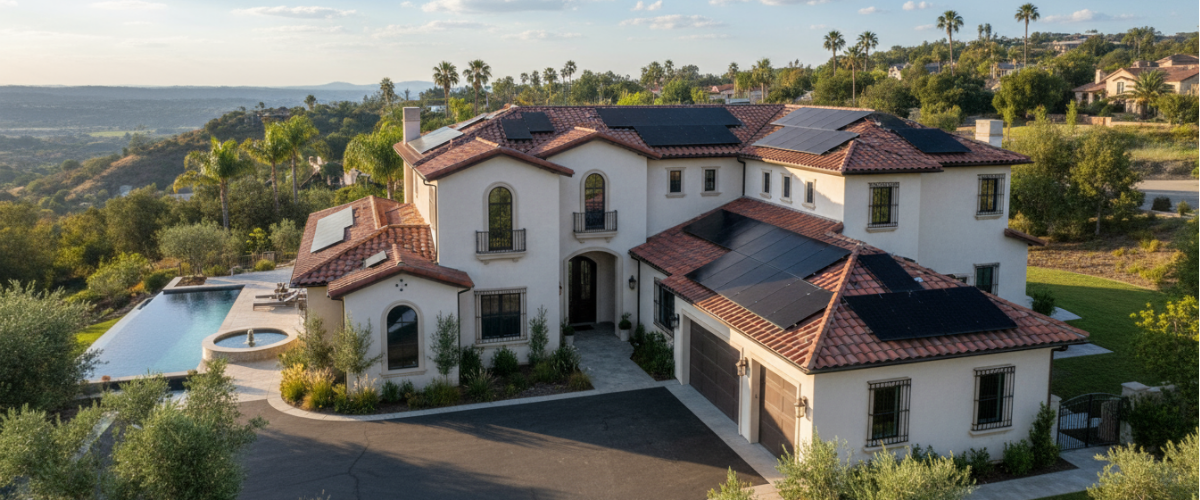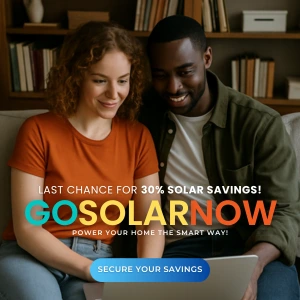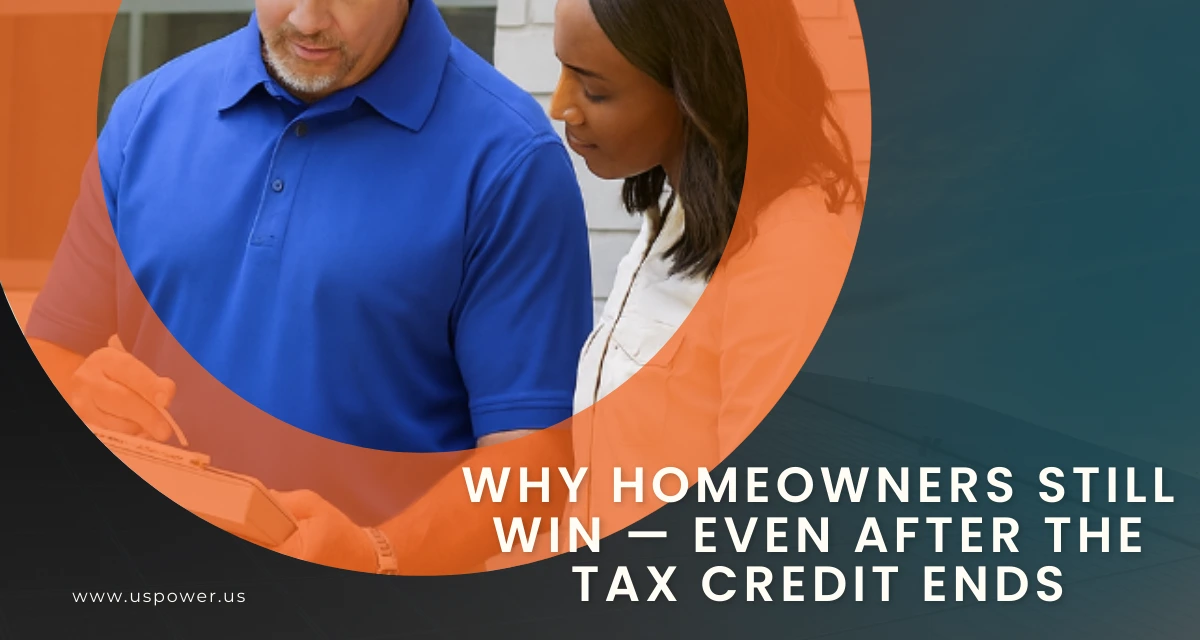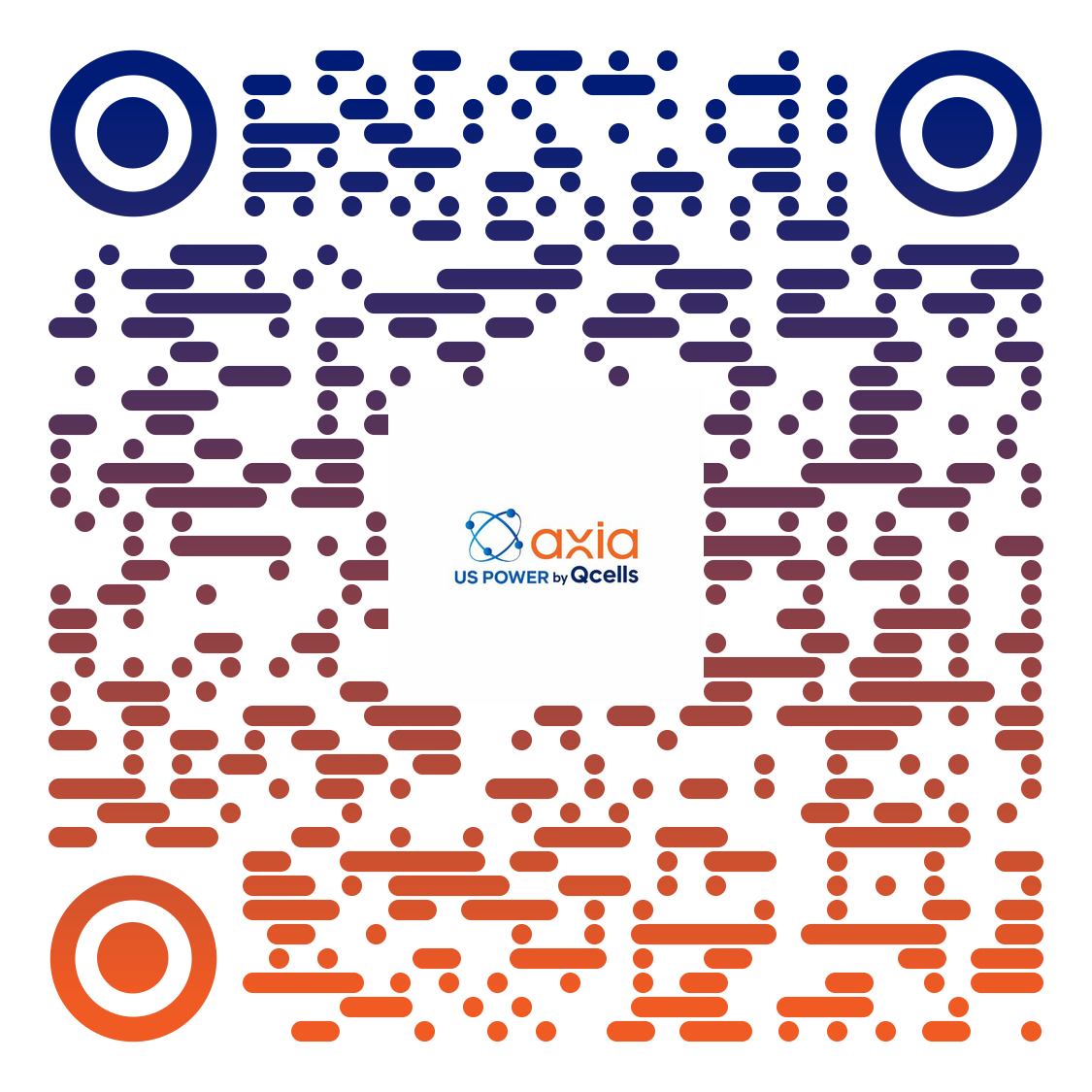Don’t Lose Your 30% Solar Tax Credit in 2025

Solar and Roofing Advisor
Learn how new FEOC and Domestic Content rules could affect you when claiming your solar tax credit. Stay eligible with US Power’s American-made Qcells panels.

If you’re planning to go solar in 2025 or 2026, there’s one rule that could make—or completely break—your federal solar tax credit. It’s called the Foreign Entities of Concern (FEOC) rule, and it works hand in hand with the Domestic Content requirement introduced under the Inflation Reduction Act (IRA).
These two policies could affect how much you save, which solar panels you can use, and even whether your project qualifies for the 30% federal tax credit at all.
At US Power, we specialize in helping Southern California homeowners navigate these rules while maximizing their savings using American-made solar panels from Qcells, our exclusive factory-direct partner.
Why This Rule Matters for California Homeowners in 2025
Most homeowners in Los Angeles, Orange County, and Ventura County have heard about the 30% federal solar tax credit, but few realize that new supply chain rules could change how it’s applied.
As of 2025, two separate—but connected—rules define eligibility:
- Domestic Content Bonus:
Projects using a certain percentage of U.S.-made materials can qualify for an additional 10% tax credit on top of the standard 30%.
For 2025, at least 45% of your project’s total manufactured components must be produced in the United States, with that percentage increasing in future years. - Foreign Entities of Concern (FEOC) Restriction:
Starting in 2025, the U.S. Department of Energy and Treasury are enforcing new limits that disqualify projects that use materials, cells, or components sourced from “foreign entities of concern.”
These countries include China, Russia, Iran, and North Korea, where much of the world’s solar cell and wafer production has historically come from.
How It Affects Your Solar Tax Credit Eligibility
Here’s where it gets serious:
- Meeting Domestic Content = Reward. You could earn up to 40% in total credits (30% base + 10% bonus).
- Violating FEOC = Penalty. Your project could lose the entire 30% federal tax credit if components are sourced from restricted suppliers.
That means the panels, inverters, and racking systems installed on your home must come from verified non-FEOC supply chains.
For California homeowners planning installations in 2025–2026, these sourcing rules are more than a formality—they’re now a determining factor in your project’s total cost and return on investment.
What Is “Domestic Content,” Exactly?
The Domestic Content Requirement comes from the Inflation Reduction Act and was clarified in IRS Notice 2025-08.
To qualify for the 10% bonus, solar systems must meet these thresholds:
- Steel and Iron: 100% must be U.S.-made (including mounting structures and racking).
- Manufactured Products: At least 45% of the total cost must be manufactured in the U.S. in 2025, increasing to 55% by 2027.
- Certification: Installers and suppliers must maintain documentation proving the origin of each component.
The intention is clear: to boost American manufacturing, strengthen energy independence, and reduce reliance on foreign supply chains that can threaten U.S. energy security.
But for homeowners, this adds another layer of complexity. You now need to ensure your installer partners with manufacturers who can prove compliance.
What Are “Foreign Entities of Concern” (FEOC)?
The FEOC rule, established under Section 40207 of the Infrastructure Investment and Jobs Act and expanded in 2025 guidance, restricts tax credits for systems using materials or components from entities under the jurisdiction, ownership, or influence of certain nations.
That means:
- Solar panels or inverters with cells manufactured in China may disqualify you.
- Battery storage using Chinese cathode materials could also be affected.
- Even if assembly happens in another country, the source of the cells or wafers still matters.
In short:
✅ American-made = Safe
⚠️ Imported with unclear origin = Risky
❌ FEOC-linked = Disqualified
The Hidden Risk: Supply Chain Shortages and Price Fluctuations
Because these requirements limit eligible products, supply shortages are already surfacing across the solar industry in late 2025.
Manufacturers like Qcells are scaling up U.S. production in Georgia and Texas, but FEOC-free solar panels are in high demand.
That means homeowners waiting until mid-2026 may face:
- Higher pricing for compliant products
- Delays in installation timelines
- Potential redesigns if hardware availability changes
This is why timing matters. Homeowners who sign contracts and begin construction (safe harbor) before stricter enforcement dates can lock in current tax credit eligibility—even if future supply conditions shift.
Why US Power + Qcells Is the Safest Path Forward
US Power is proud to be a Qcells-exclusive partner, delivering factory-direct pricing and verified American-made panels to Southern California homeowners.
Here’s how that benefits you under the 2025 rules:
- ✅ FEOC-Free Manufacturing: Qcells produces panels with U.S.-assembled cells in Dalton, Georgia and Cartersville, ensuring compliance with federal guidelines.
- ✅ Domestic Content Advantage: Using Qcells products helps qualify for the 10% domestic content bonus where applicable.
- ✅ Local Installers, Local Permits: Our in-house installation teams understand the permitting and interconnection rules across SCE, LADWP, and SDG&E territories.
- ✅ No Middlemen: Factory-direct pricing reduces costs and ensures every product’s origin is fully traceable.
By choosing US Power, you’re not just investing in solar—you’re investing in compliance, reliability, and future-proof savings.
2025–2026 Action Plan for Homeowners
Here’s what every Southern California homeowner should do before installing solar:
- Start Your Project Now
Safe harboring your system in 2025 can preserve eligibility under current FEOC rules and pricing. - Choose American-Made Panels
Confirm that your panels, racking, and inverters meet domestic-content standards. Qcells is an industry leader in this area. - Request a Documentation Guarantee
Ask your installer for documentation verifying component origin—it’s your safety net for IRS compliance. - Consult a Qualified Tax Professional
Confirm your project qualifies under Section 25D (residential) or 48E (commercial) and understand what documentation to retain. - Stay Flexible
If supply changes, choose alternate compliant products early to avoid delays or higher costs.
A Silver Lining for the Solar Industry
Despite the complexity, the FEOC and Domestic Content rules have a bright side:
- They’re reshaping U.S. manufacturing, bringing thousands of new solar jobs and boosting domestic capacity.
- They protect homeowners from long-term tariff and import risks.
- And they ensure that when you install solar in 2025, your system is contributing to a stronger, more sustainable U.S. energy grid.
In fact, by late 2025, Qcells’ expanded facilities are expected to produce over 8.4 GW of solar modules annually—enough to power 1.3 million homes nationwide.
Get Protected. Get Solar. Get US Power.
The new FEOC and Domestic Content rules are reshaping how homeowners qualify for federal solar incentives.
Failing to comply could disqualify your entire 30% tax credit—but partnering with an experienced, compliant installer ensures you’re protected.
At US Power, we make solar simple, compliant, and future-proof.
We handle your entire installation process—from design to permitting to final inspection—using Qcells’ U.S.-made solar panels built for long-term performance.
Ready to take control of your energy and lock in your federal tax credit before it’s too late?
Schedule your Free Solar Consultation with US Power.
Our energy consultants will analyze your home, verify your eligibility, and provide a custom solar quote using FEOC-free, American-made panels. Don’t risk losing thousands in tax credits—act now and power your home with confidence.
Artículos relacionados
Nuestros blogs relacionados
Learn how to choose reliable solar battery installers for your home in 2025.
Solar energy still pays off — maximize saving without waiting for solar tax credit.
A 2025 homeowner’s guide to safe, efficient solar connectors. Safer, Smarter Solar!
Nuestros socios de marcas de energía solar y techos








Empoderamos a las comunidades y las empresas para que aprovechen las energías limpias y renovables energía solar soluciones que impulsan el crecimiento sostenible.
Derechos de autor © 2025 US POWER | Energía solar y techosUS Power - Axia by QCells. All Rights Reserved.
La privacidad es importante para nosotros, por lo que tiene la opción de deshabilitar ciertos tipos de almacenamiento que pueden no ser necesarios para el funcionamiento básico del sitio web. El bloqueo de categorías puede afectar a su experiencia en el sitio web.
Imprescindible
Estos elementos son necesarios para habilitar la funcionalidad básica del sitio web.
Personalización
Estos elementos permiten que el sitio web recuerde las elecciones que ha realizado (como el nombre de usuario, el idioma o la región en la que se encuentra) y proporcionan funciones mejoradas y más personales.
Mercadeo
Estos artículos se utilizan para ofrecer publicidad que sea más relevante para usted y sus intereses.
Analítica
Estos elementos ayudan al operador del sitio web a comprender cómo funciona su sitio web, cómo interactúan los visitantes con el sitio y si puede haber problemas técnicos.
Nosotros y nuestros socios externos utilizamos cookies y otras tecnologías para mejorar y rastrear su experiencia en este sitio, realizar análisis y personalizar el marketing para usted. Al usar el sitio, aceptas que usemos estas tecnologías, incluido el registro y el monitoreo de tus interacciones con el sitio.
¡Obtenga una estimación solar instantánea usando el satélite!










